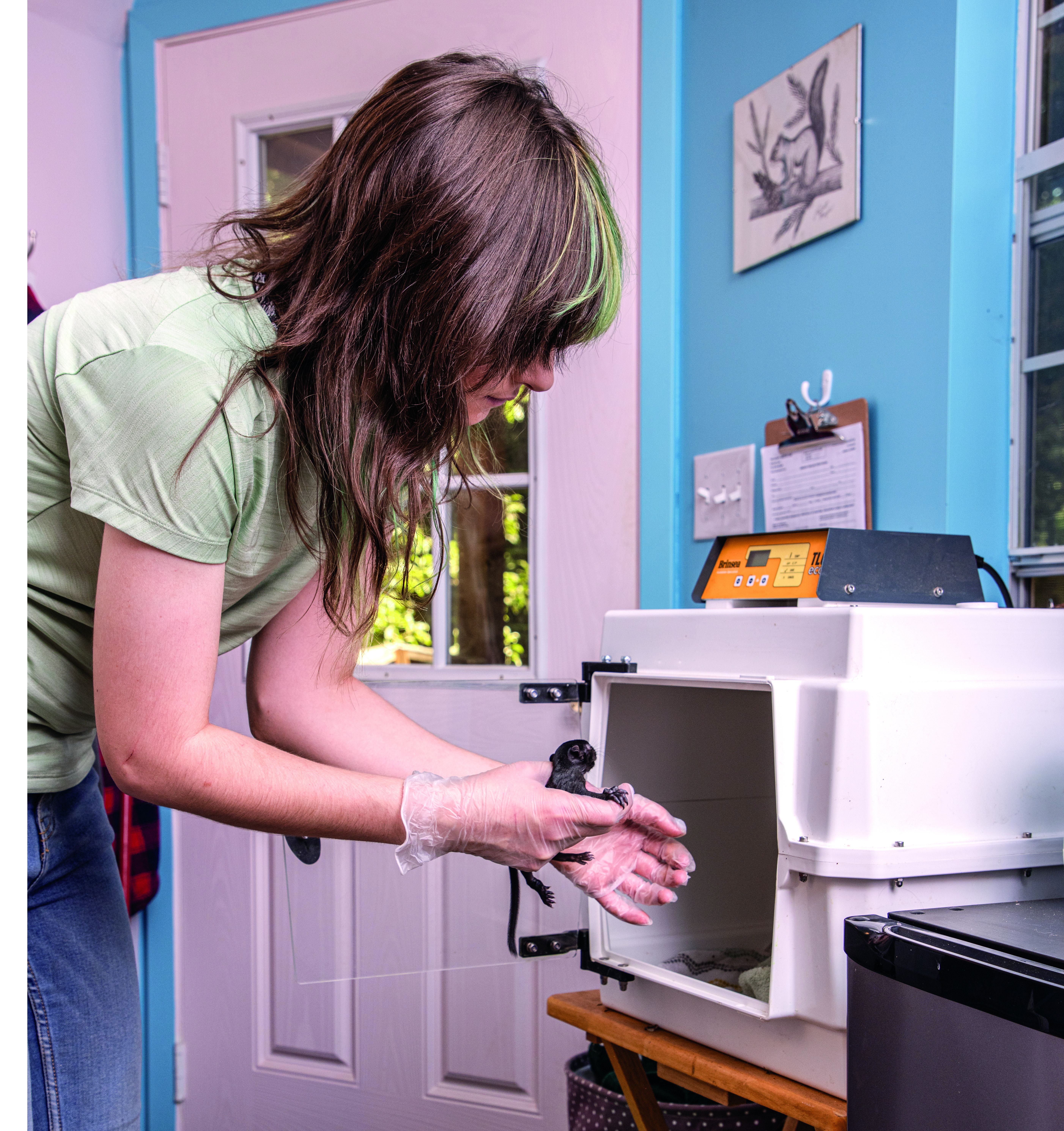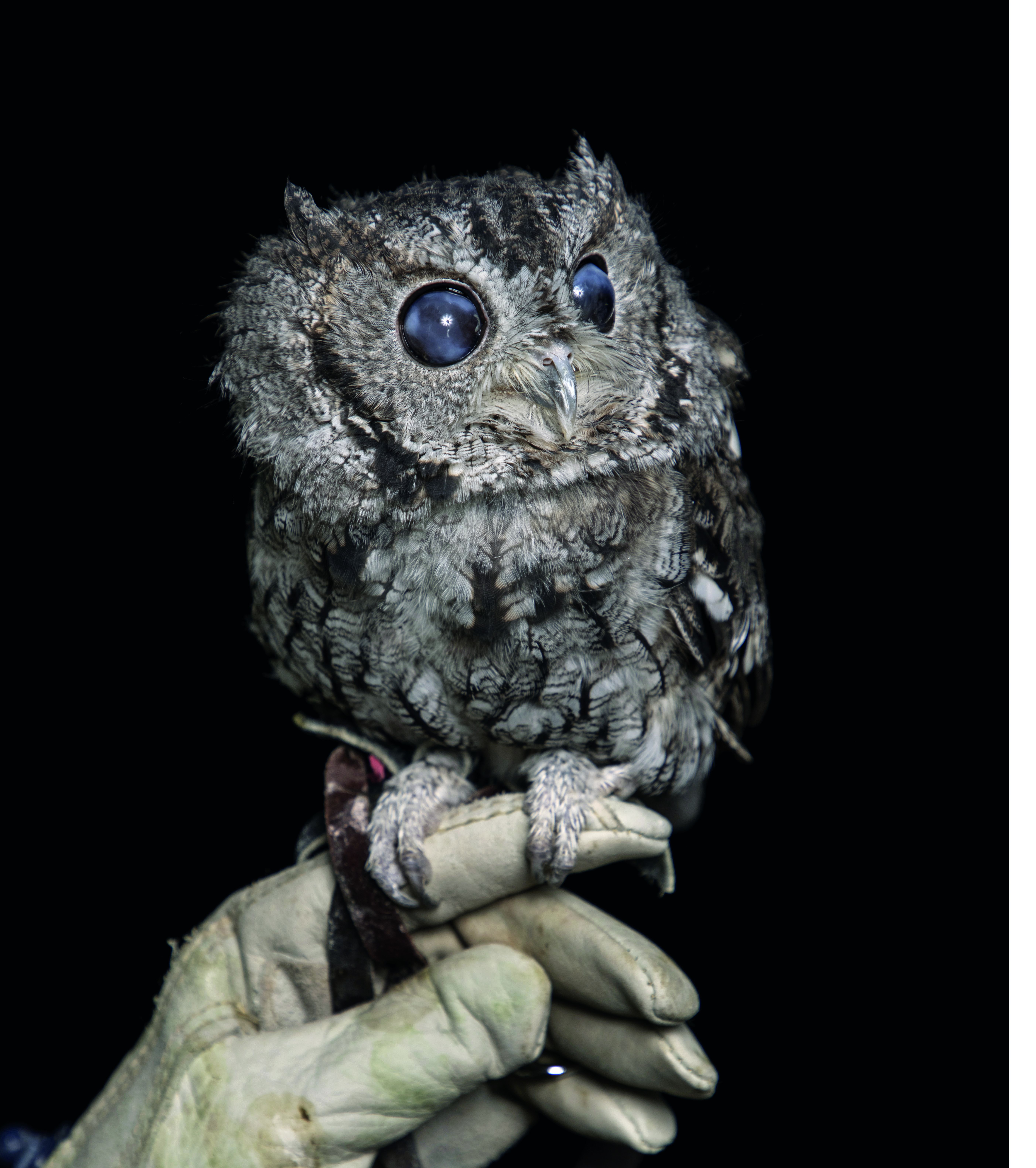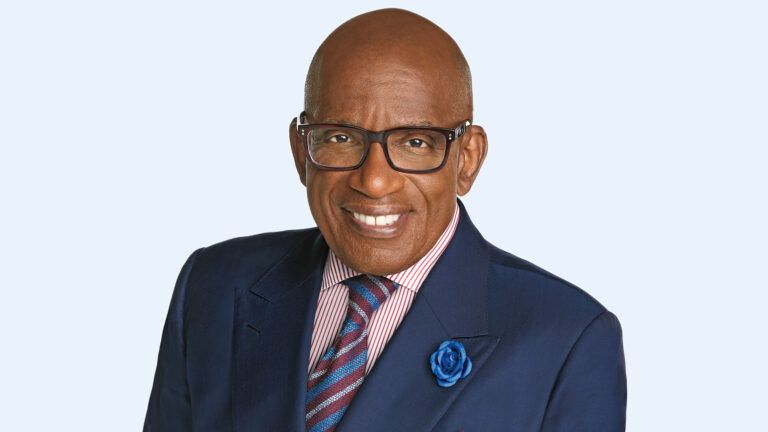Every time I hold a baby squirrel in my hands, I feel a sense of wonder and gratitude at what I’m being entrusted with, at what God is asking me to do. I’m 27 and I volunteer as the squirrel team leader for Tri-County Wildlife Care (TCWC), a nonprofit rescue that rehabilitates and cares for injured, orphaned or displaced squirrels, birds and other wildlife in northern California’s Amador, Calaveras and San Joaquin counties. During the past seven years, I’ve helped hundreds of “patients” heal and grow and, eventually, return to the wild.
It’s emotionally demanding work. Some days are hard, made harder by the fact that I have chronic intractable migraine disease. I live with disabling headache pain. So why do I pour so much of myself into taking care of baby squirrels? Because at the lowest point in my life, saving wildlife saved me too.

“I can’t take this anymore!” I cried one day when my mom came to get me from the nurse’s office.
My parents and teachers agreed to let me finish high school at home. Academically, it was a good solution. I was able to work at my own pace and catch up with my classes. But the social isolation was soul-crushing. Kids my age were focused on the here and now. Since they didn’t understand my condition and I wasn’t well enough to hang out much, they soon forgot about me. My friends, even the ones from church, drifted away.
Thankfully, I had my parents in my corner, especially my mom. My dad worked long hours in architecture and construction management. Mom stayed home with me, and she did everything she could to make things better. There were mornings my head hurt so badly I couldn’t get out of bed. She would come into my room, singing, “This is the day, this is the day that the Lord has made. I will rejoice and be glad in it.” In those moments, hope peeked through the pain and desolation, like the first light of dawn on a winter morning. Even though I wasn’t quite up to rejoicing, I could lean on the promise of that psalm. And that’s what I tried to do as more tests were run, MRIs and CAT scans done, medications prescribed.
My migraines didn’t respond to medication, though, and most of the time, I felt broken. Useless. Disconnected from the rest of the world, from anything that mattered. Until one spring morning my junior year, when my mom glanced out the kitchen window and spotted a fallen nest and two baby California towhees, a species of sparrow, in our yard. A scrub jay was lingering around the downed nest and the towhees lay on the ground, defenseless. I ran outside and shooed the jay away, then crouched down beside the baby birds. Were they still alive? They were so young, their skin was almost transparent. I leaned closer.
“They’re breathing!” I called to my mom, who was looking out the kitchen window. She brought out a small box, and I set the babies inside. They were cold and covered in ants. I lined the box with a towel and spent hours carefully cleaning off the birds with cotton swabs.
“You’re going to be okay,” I said to them. “I promise.”
The next day my mom and I took the towhees to a wildlife rehabilitation center in the Bay Area. The rehabber told me I’d done the right thing for them. For the first time in a long time, I felt functional. Helpful instead of helpless. It was as if the baby birds’ need for me was stronger than my pain. Was God trying to tell me something?
I graduated high school on schedule. Then I took online courses at community college and earned my veterinary assistant certificate. I worked part-time, as my health allowed, in an animal hospital. But by 2014, my condition had worsened. Pollution and noise triggered my migraines, and I desperately needed to leave the city for cleaner air and a quieter environment. My parents and I moved to a house in the Sierra Nevada foothills. I wanted to find something meaningful to do to ground myself. I began volunteering for TCWC.
“I’ll help wherever I’m needed,” I told the directors. I started out with songbirds in the baby bird nursery. It turned out there were more baby squirrels than volunteers could keep up with so my TCWC mentor taught me how to care for them. I actually became a full-time staffer for a while, but the head pain prevailed, and I returned to volunteer status in 2019.
I now do wildlife rehab at my home, where I can rest as needed. At first, I nursed squirrels in my laundry room, but as more animals came in, we built a squirrel barn on the property. There are neonatal, quarantine and young adult rooms; an office; and an exam area. Tunnels and large outdoor cages allow my patients to wander and exercise as they get stronger. Sometimes there are close to 40 squirrels in the barn. I can’t help falling in love with their personalities and behaviors. It brings me so much joy to be able to give these orphaned and injured babies a second chance at being free in the wild and living a happy and fulfilled life.

The unpredictability of my migraines makes it challenging for me to balance my responsibilities. The pain never completely goes away, but I have found methods that ease it—meditation, yoga, qigong, herbal tea, ice packs, heating pads. On the most difficult days, I look at these animals that are depending on me, and I know God is calling me—just as he was when I discovered those baby birds. Now I understand it’s not so much that these creatures’ need is more powerful than my pain but that God is.
Recently, I brought another patient into the squirrel barn. The western gray was six weeks old and had suffered a concussion after the tree she lived in was felled. I could feel her rapid heartbeat through my gloved hands. She was anxious.
“Poppy,” I said, rubbing my fingers gently over her body. “That’s what we will call you.” She chirped and tried to squirm out of my hands.
“You’re going to be okay,” I reassured her. “I promise.”
I drew warm rehydration fluid into a syringe equipped with a nipple. She clenched it between her tiny paws and drank until it was empty. Then she crawled from my hands back into the fleece nest in her crate. I started a chart for her and recorded everything, as we volunteers do for all the creatures under our care. Poppy curled up and fell asleep. I hope she knows that I’m in her corner, I thought.
I went back to the house. Marbles greeted me from her perch, cooing softly. My headache was a dull throb, manageable. I dropped a chamomile mint tea bag in my favorite cup and put a kettle of water on the stove, singing, “This is the day that the Lord has made. I will rejoice and be glad in it.”
For daily animal devotions, subscribe to All God’s Creatures magazine.





